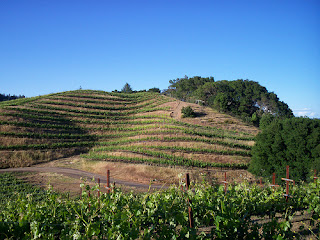DEFINITION :-
A plateau is an extensive unpland area with almost flat topped surface and broad summit. Plateaus are extensively flat upland areas with altitudes of above 300 meters from the sea-level. They have steep sides and deep edges. They often look tables standing above the surroundings and for this, they are, sometimes, called tablelands. The plateaus are of different heights.Some plateaus are very high : some of them higher than mountains. The tibetan plateau is about 4,500 meters high. There are also many low plateaus with a height of a few hundred meters. The plateaus along the western margin of West Bengal are only 300 meters. The Pamirs in Asia is the highest plateau 4,873 meter in the world and that is why it is called "The roof of the world". The Ladakh plateau 3,500 meters of Kashmir is the plateau in India.
FORMATION :-
Plateaus are formed in various ways :
(1) The accumulation of lave erupted from the volcanoes, sometimes, build up plateaus ;
Maharrashtra plateau.
(2) Tectonic movements sometimes lift the land up and this upliftment of the lowland often forms plateau ;
The Tibetan plateau
(3) sometimes extensive uplands and mountain areas are worn down by natural agents (the sun,the rain and the running water etc.) and low dissected plateaus are formed .
(1) The accumulation of lave erupted from the volcanoes, sometimes, build up plateaus ;
Example :-
Maharrashtra plateau.
 |
| Fig :- Maharrashtra Plateau |
(2) Tectonic movements sometimes lift the land up and this upliftment of the lowland often forms plateau ;
Example :-
The Tibetan plateau
 |
| Fig :- Tibetan Plateau |
(3) sometimes extensive uplands and mountain areas are worn down by natural agents (the sun,the rain and the running water etc.) and low dissected plateaus are formed .
CLASSIFICATION OF PLATEAUS :-
Plateaus are mainly of three major types : (1) DISSECTED PLATEAU (2) INTERMONTANE PLATEAU and (3) LAVA PLATEAU
DISSECTED PLATEAU :-
The plateaus which are formed owing to weathering,erosion,and denudation of the former upland areas and are cut by innumerable rivers and rivulets with small vales and dales,are popularly know as dissected plateaus.
FORMATION :-
The natural agents, such as, the sun, the rain, the wind, the running water and the glacier wear away the soft rocks of the upland areas.The resistant rock masses are left there standing on the ground above the surroundings. The sometimes from almost level surface, cut by rivers and streams. These upland areas together form dissected plateau.
EXAMPLE :-
(1) The chotanagpur plateaus of jhrkhand, (2) Malnad regions of karnataka, (3) The malwa plateau of central india and (4) The plateaus of wales in great Britain are some of the important examples of the dissected plateau.
 |
| Fig :- Chotanagapur Plateaus |
Malnad+regions+of+karnataka,.jpe) |
| Fig :- Malanad regions of karnataka |
INTERMONTANE PLATEAU :-
The plateaus which have mountain rim round their surroundings are know as intermontane plateaus. These plateaus are, in fact, encircled by high mountain chains. The intermontane plateaus are some of the high plateaus of the world.
FORMATION :-
During mountain building movement when fold mountains rise up due to the horizontal pressure on the layers of rock,the lands in between the mountains also lift up.Thus the upliftment of fold mountains often builds up the intermontane plateau in between their ranges.
EXAMPLE :-
(i) The Tibetan plateau in between the Himalayas and the Kunlun, (2) Iranian plateau in between the Zagros and Elburz mountain, (3) The Anatolian plateau in between the pontics and Taurus mountain are the most suitable examples of the intermontane plateau.
LAVA PLATEAU :-
The plateaus which are formed by volcanic lava, are called lava plateaus.
FORMATION :-
These plateaus are formed as a result of lava flow in volcanic regions. Lava spreads over the earth's surface and solidifies to form a lava plateau.These plateaus cover large areas on the earth's surface.
EXAMPLE :-
(1) The plateau of Maharashtra, situated in the north-west of the decan plateau in India, is formed by lava. (2) The snake-Columbia basin in U.S.A. (3) The plateau of Somalia and Ethiopia in east Africa, (4) The plateau of Bolivia in south america and (5) The plateau of Maxico (Sierra madre) are the distinctive examples of lava plateau in the world.
No comments:
Post a Comment